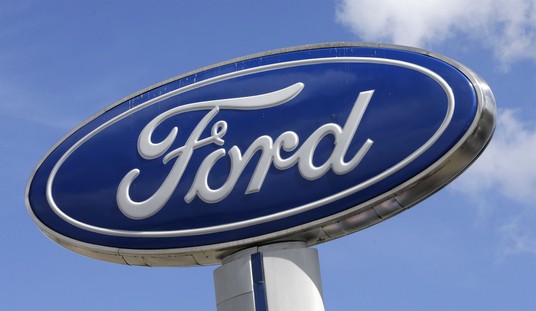
In a "groundbreaking" speech Tuesday at Georgetown University, Barack Obama rehashed the same anti-Big Oil themes and half-baked energy policies that have marked his Administration since 2009. (See here and here for historical examples.)
One change: President Obama has decided he likes natural gas*, and credits "Federally supported technology", an implicit endorsement of fracking (its name is still as taboo as that other F-word). He’s still not crazy about oil, but since we’re producing more of it, he may as well claim credit. As for the Keystone Pipeline, more equivocating: this Administration has dithered about the XL permit for longer than it took to build the Trans-Alaska Pipeline over eight frozen mountain ranges.
Now, one thing I want to make sure everybody understands — [transitioning to a clean energy economy] does not mean that we’re going to suddenly stop producing fossil fuels. Our economy wouldn’t run very well if it did. And transitioning to a clean energy economy takes time. …
I put forward in the past an all-of-the-above energy strategy, but our energy strategy must be about more than just producing more oil. And, by the way, it’s certainly got to be about more than just building one pipeline [the Keystone XL]. (Applause.) …
Now, even as we’re producing more domestic oil, we’re also producing more cleaner-burning natural gas than any other country on Earth. And, again, sometimes there are disputes about natural gas, but let me say this: We should strengthen our position as the top natural gas producer because, in the medium term at least, it not only can provide safe, cheap power, but it can also help reduce our carbon emissions. …
The bottom line is natural gas is creating jobs. It’s lowering many families’ heat and power bills. And it’s the transition fuel that can power our economy with less carbon pollution even as our businesses work to develop and then deploy more of the technology required for the even cleaner energy economy of the future.
Beyond the sloganeering, Mr. President, how are we going to do that?
And because billions of your tax dollars continue to still subsidize some of the most profitable corporations in the history of the world, my budget once again calls for Congress to end the tax breaks for big oil companies, and invest in the clean-energy companies that will fuel our future. (Applause.)
Where to begin?
To the extent that the petroleum industry benefits from current tax law — which allows some accelerated cost recovery to the industry, which is not unique among industries and not a subsidy — the net effect is the current uptick in domestic production of oil. Increase the tax burden, and you decrease the incentive to drill. So you might kill the current boom you’ve become so proud of.
Plus which, the oil and gas industry is already the second highest- (arguably the highest-) taxed segment of the economy. And the profit numbers are big, not because the percentage profit margins are high, but because American oil companies are among the largest concentrations of private capital on the planet.
Plus which, many of those tax breaks have already been taken away from the "majors", the large, integrated multinational companies that are household names.
Plus which, oil and natural gas are inextricably linked. It would be well-nigh impossible to "split the baby", to tax oil without taxing natural gas.**
So the plan I’m announcing today will help us double again our energy from wind and sun. Today, I’m directing the Interior Department to green light enough private, renewable energy capacity on public lands to power more than 6 million homes by 2020. (Applause.)
I’ve spent too much of my Saturday trying to ferret out the numbers for wind and solar. The Energy Information Administration, the government’s compendium of energy statistics, makes it a challenge because they lump wind and solar energy into the category "Renewable Energy". As a category renewables account for about 9% of the nation’s total energy supply; the lion’s share is made up of geothermal, hydroelectric and "biomass" (wood and plant-derived ethanol). Wind and solar combined are at the 1-2% level, so doubling their capacity will not be a game-changer.
Since they are not transportation fuels, growth in wind and solar does not displace crude oil as is often suggested. Rather, they will displace the cheapest electricity generating fuel, coal, with the most costly and highly subsidized source.
* Natural gas was never part of Obama’s strategy. It kind of snuck up on him, and as it has displaced coal and significantly reduced carbon emissions its appeal is impossible for them to deny. Now he has to embrace it.
Here’s an excerpt from my review of Obama’s 2010 State of the Union address:
Natural gas is the 800-pound gorilla that the President struggles to avoid. Natural gas delivers everything the President says he’s looking for in an ideal fuel: it is abundant, clean and American. Its infrastructure is in-place and the means to exploit it is off-the-shelf. Innovation and technology have increased the assessed resource base by over a third in just four years; we think we have a 100+ year domestic supply at current consumption rates. A commitment to natural gas would put people to work immediately, not speculatively and not years from now.
It’s as if a profitable, healthy domestic gas industry would create a problem for the President. As illogical as it may seem, his policies discourage domestic exploration. Obama seems to think that profitable, productive capitalists are a symptom of, not a cure for, the disease that ails our economy.
My message in these pages has been consistent since 2009. It’s nice that the Administration is finally coming around, four years late, to embracing the obvious.
** Which reminds me of the story of a one-time leading second-tier integrated energy companies; let’s call them Moon Oil Corporation. Along about the late ’60’s, early ’70’s Moon hired a major management consulting firm to advise it on how best to structure its exploration and production (E&P) business. The consultant’s ultimate recommendation ran counter to the conventional wisdom of industry old-timers: the shiny-pants MBAs told Moon management that they should restructure their upstream arm into two separate and distinct parts, Moon Oil Company and Moon Natural Gas Company.
It worked about as well as if you split KFC into Kentucky Fried White Meat and Kentucky Fried Dark Meat. Oil and gas are almost always found together, and it is impossible to segregate gas drilling and production from oil drilling and production, no matter how hard you try and no matter how much sense it might seem to make at Harvard Business School or in Washington, DC.
The division of Moon was, of course, impractical, inefficient and duplicative. The separation lasted a few years before the pieces were merged. The company exited the E&P business for good in 1988.














Join the conversation as a VIP Member